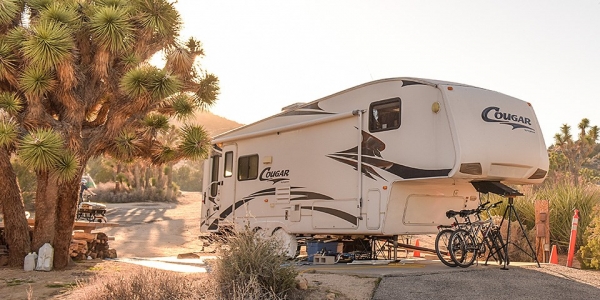Welcome to Crossing Creeks RV Resort & Spa in the heart of iconic Blairsville
Can you take your RV into a national park and use it to camp?
Yes, you can. And no, you can’t.
Confused? You might be, because every national park and national monument has its own set of rules for RV camping. The rules differ because every park differs.
If you want to take your RV into a park, whether it’s a trailer or a motorhome, the National Park Service cautions that you must check out the rules for the specific park you plan to visit well in advance. You have to make a park campsite reservation well in advance, too, because space is limited—in more ways than one.
Some RVs Welcome at Some Parks
Here’s what the National Park Service says about RV camping at national parks and monuments: “RV and towed campers are more than welcome at national parks that can accommodate them.” Note the boldface italics, added for emphasis. The simple facts are that some parks can handle RVs, some parks can’t, and some can handle RVs only if they’re within size limitations or a certain type.
“RV and towed camper sites vary from park to park (i.e., pull-through campsites, back-in campsites), and there could be space issues with slide-outs,” the park service advises.
The need for reservations is quite simple. Campsites for RVs, where they are available, are few in number compared with demand.
Parking Your RV, Not Camping in It
At some national parks—there’s that phrase again—RVers can park if they don’t drive into the park. Some have spaces even if RVs can be driven into the park or monument but not camped. But not every park has RV parking spaces, which typically are where buses also are parked.
The park service makes finding RV parking rules for each park convenient online.
Even when spaces are available, they aren’t always adequate for the number of RV-driving visitors. The parks are perennially popular. At Little Bighorn Battlefield National Monument in Montana, for instance, the park service makes a creative suggestion to RV drivers who can’t find a space during the peak months of June and July—that they “drive out on the 5-mile driving tour road to the Reno-Benteen Battlefield and Entrenchment trail.”
Why? “Upon returning,” the service says, “there should be parking available.”
Simple enough.
Few Parks Have Hookups
RV hookups are rare at national parks. Where RV campsites are available, expect to boondock. After all, the parks are natural wonders. Preservation and RV hookups don’t exactly go hand-in-hand.
The website Tripsavvy.com does list three national parks with RV hookups:
- Yellowstone National Park, Fishing Bridge Campground only, 340 sites with 50-amp electrical, water, sewer.
- Grand Teton National Park, Colter Bay RV Park, 112 sites with water, sewer and electric; Headwaters Campground, an unspecified number of sites with 20- and 50-amp electric, sewer and water.
- Grand Canyon National Park, Trailer Village, sites with 30- and 50-amp electrical, water, sewer, cable; RVs up to 50 feet in length.
Private Alternatives
National parks are tourist magnets. That means there are many nearby RV facilities, some with full service, some without. Look online; it’s not hard to find a privately owned RV park to suit your needs.
We added the italics because that phrase is key to understanding whether or not you can.
Always check with the park you are visiting for size restrictions and the number of sites that can accommodate RVs and towed campers.
Photo Credits: National Park Service
Leave a comment
Make sure you enter all the required information, indicated by an asterisk (*). HTML code is not allowed.
